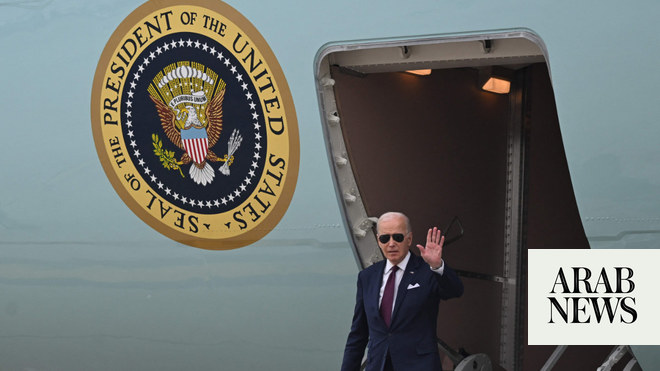
Angela Merkel is about to embark on the last big foreign policy trip of her chancellorship. She will visit Russia and Ukraine from Friday until Sunday to intervene in a standoff between the two countries that has become the bloodiest European conflict since the wars over the former Yugoslavia in the 1990s.
There is a clear economic dimension to the crisis, too. For instance, the conflict is at the heart of discord between the US and Germany over Nord Stream 2, the now near-complete 764-mile pipeline under the Baltic Sea that will double Russian gas exports to Germany. Ukrainian authorities say Nord Stream 2 threatens their nation’s security and will cost it about $3 billion a year in lost gas-transit fees.
Under the terms of a US-German deal last month to ease tensions over these issues, Ukraine will reportedly get $50 million in green energy technology credits, plus a guarantee until 2024 of repayment of the gas-transit fees it will lose as a result of being bypassed by the pipeline.
While military tensions between Ukraine and Moscow have eased somewhat in recent weeks, the border remains one of the most dangerous flashpoints in the world. This year, Moscow deployed an estimated 100,000 troops in a major show of force. Dmitry Kozak, Russia’s former deputy prime minister, warned of a potential armed intervention to help Russian citizens in eastern Ukraine.
The build-up worried the West, with former US Ambassador to Ukraine Steve Pifer describing the situation as “one step from war.” It prompted the US to put its forces in Europe on a higher level of alert, and President Joe Biden — who served as Washington’s point person on Ukraine during the Obama administration, visiting the nation six times while he was vice president — reaffirmed his support for Ukraine’s “sovereignty and territorial integrity.”
This commitment is important given international fears about the viability of the Ukrainian state. In Donetsk and Luhansk, Russian-backed separatists have seized significant portions of the regions, using heavy weaponry.
With Volodymyr Zelensky due to travel to Washington to see Biden this month, the first time a Ukrainian president has visited the White House in more than four years, Merkel will be seeking, once again, to ease tensions.
She has often talked about her own experience of growing up behind the Iron Curtain in East Berlin during the Cold War, and repeatedly said that there is no military solution to the conflict between Russia and Ukraine. In particular she fears, given the current mistrust of Moscow, that if Ukraine receives extensive supplies of Western weaponry it will only intensify the conflict and risk it becoming a proxy war between Russia and the West.
While military tensions between Ukraine and Moscow have eased somewhat in recent weeks, the border remains one of the most dangerous flashpoints in the world.
Andrew Hammond
The backstory here is that the region has been a major flashpoint since Russian-sympathizing separatists seized swathes of territory in 2014. This followed a change of regime in Kiev, when pro-Moscow Viktor Yanukovych was ousted following popular protests.
While much of the fighting ended with a ceasefire in 2015, deadly exchanges continue. Battles between Ukrainian forces and Moscow-based separatists in the Donbass region of eastern Ukraine alone have killed about 14,000 people, and 2 million have fled their homes.
On several occasions in recent years a number of leaders have sounded the alarm bells, including former Ukrainian Prime Minister Petro Poroshenko and former French President Francois Hollande who warned of the threat of “full-scale war” and “total war” respectively.
The fundamental question shaping the future of the conflict is likely to remain how risk tolerant the Russian leadership will be, with President Vladimir Putin potentially staying in power into the 2030s.
Previously, Moscow had hoped that sustained economic, military and political pressure could lead to significant loss of support within Ukraine for the pro-Western stance of the Kiev government. That scenario has not fully come to pass, yet, and a key question now is the degree to which the US and the wider West will continue to support Ukraine. During his meeting with Biden, Zelensky is likely to request that top US officials assist with peace negotiations, given that the current Normandy Summit and Trilateral Contact Group initiatives have stalled.
It is also possible he will request further clarity on Ukraine’s relationship with NATO. Since the start of the conflict, Ukraine has undergone a series of defense reforms to help it become interoperable with the Western military alliance. It has become the first partner nation to participate in NATO’s Response Force, and is also one of six non-member nations to hold “Enhanced Opportunities Partner” status.
If tensions rise again, international debate could reignite not only about US and European sanctions that have been in place against Russia since 2014, but also intensified military support for Kiev.
It is also possible it could reopen the debate in Washington over enhanced US bilateral military support. Toward the end of his presidential term, Barack Obama considered a range of potential options, including so-called “non-lethal” equipment such as reconnaissance drones and radar screens.
However, the West is divided on this issue. Some, including Merkel, are concerned that the provision of extensive tranches of such equipment could be used by Ukraine not only to secure a military balance on the ground between its own forces and those of the separatists, but could also potentially become a means to achieve riskier military goals that could cause the crisis to spiral out of control again, with Moscow potentially raising the stakes, too.
• Andrew Hammond is an Associate at LSE IDEAS at the London School of Economics.
Disclaimer: Views expressed by writers in this section are their own and do not necessarily reflect Arab News" point-of-view










